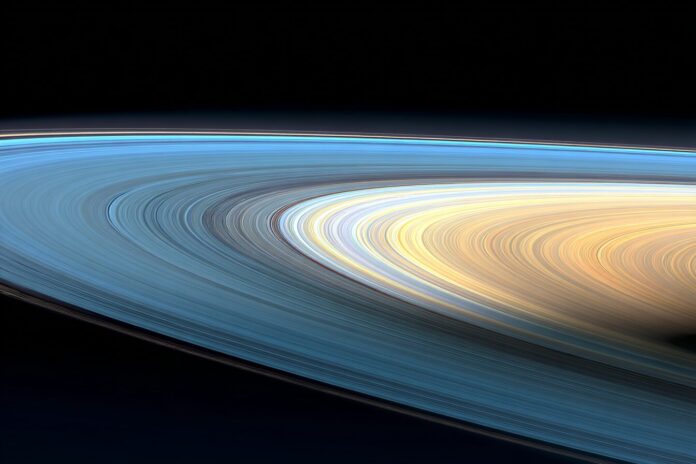Curiosity Among the Cosmos: The Allure of Saturn’s Rings
When gazing at Saturn through a telescope, many first-timers wonder about the planet’s iconic rings. For space enthusiasts, one question naturally arises: Can you drink Saturn’s rings? This thought-provoking inquiry blends advanced space science with one of our most basic needs, conjuring up visions of cosmic hydration that seem straight out of science fiction.
Most importantly, the intrigue goes beyond casual curiosity. Because Saturn’s rings hold secrets about the composition of our solar system, each shimmering fragment invites us to explore the potential of turning extraterrestrial resources into something as familiar as drinkable water. Therefore, many researchers and innovators are driven to explore this possibility further.
What Are Saturn’s Rings Made Of?
Attention to detail is crucial when considering the makeup of Saturn’s rings. According to scientific research, these rings consist almost entirely of water ice that varies in size from tiny grains to large chunks several meters across. This dazzling display is primarily due to the intense reflection of sunlight, which highlights the predominantly icy composition. [Wikipedia]
Besides the obvious beauty, the icy rings offer a potential water source, making them appear as a natural reservoir in space. However, the situation is more complex than it might first appear, because the purity of the ice is overshadowed by the presence of additional chemical compounds that add nuance to Saturn’s cosmic makeup.
More Than Just Ice: A Chemical Cocktail
Exploring deeper, it becomes evident that Saturn’s rings are not a mere collection of water ice. Detailed observations, such as those made by NASA’s Cassini spacecraft, reveal a fascinating layer of complexity. In addition to water, the rings contain a mix of organic compounds, ammonia, methane, carbon monoxide, carbon dioxide, and fragments of organic nanoparticles. This combination is responsible for what is now known as “ring rain,” where particles fall onto Saturn’s atmosphere. [Science News]
Because water accounts for only about 24 percent of the material that rains onto Saturn, the remainder forms a complex chemical cocktail. Most importantly, these compounds raise significant questions about whether such ice would be safe for human consumption without extensive purification.
Is Saturn’s Ring Ice Safe to Drink?
The idea of tapping into extraterrestrial ice for water is compelling. Most importantly and on paper, the abundance of ice in Saturn’s rings seems promising. Because space mining technology is evolving, some speculative visions even imagine a future where astronauts melt and filter Saturnian ice to produce drinkable water. [Kerbal Space Program Forum]
However, reality is more nuanced. In most cases, the raw ice is contaminated with various chemicals and organic particles. Moreover, consistent exposure to cosmic dust and radiation further degrades the ice. Therefore, unless advanced purification methods are employed, the ice remains unsuitable for human consumption.
Could We Purify the Ice?
From a theoretical perspective, future explorers might develop technology to extract drinkable water from Saturn’s rings. Expecting to use methods similar to those used in desalination or treating polluted water on Earth, scientists believe that advanced filtration could render this ice safe for consumption.
Because of the diverse and often toxic chemical composition, any purification system must be robust. Most importantly, the technology would need to separate harmless water molecules from a surprising array of impurities such as ammonia and organic compounds. This technical challenge surpasses many of the processes used in current space missions, making it a significant hurdle for both engineers and scientists.
The Practical Barriers: Distance and Technology
In addition to the chemical complexities, there are formidable practical challenges to overcome. First, the distance from Earth to Saturn spans nearly 1.3 billion kilometers, meaning a round trip using current propulsion technology could take several years. This makes any resource harvesting operation exceedingly difficult.
Moreover, the logistics of mining such a dynamic and radiation-filled ring system are daunting. Because controlling and transporting ice from a moving, cosmic environment requires sophisticated robotics and planning, today’s technology is not yet ready for this level of space exploitation. High energy expenditure and the need for heavy, specialized equipment further complicate the process.
Science Fiction, Today’s Science, and the Future
Saturn’s rings have long been a muse for science fiction writers. Because these rings represent a seemingly endless source of ice far beyond Earth, the idea of harvesting them has captured the imagination of many. Most importantly, the ongoing research and discussions in scientific communities suggest that such endeavors might one day become reality. [While on Saturn’s Rings]
Besides that, current scientific findings inspire us to think about how extraterrestrial resources might support deep space habitation. The challenges are enormous, but they also drive innovation and push the limits of what is technologically possible, ensuring that space exploration continues to evolve in exciting ways.
Conclusion: Drinkable but Not Ready-to-Drink
In summary, Saturn’s rings indeed contain a significant amount of water ice, hinting at the possibility of extracting drinkable water for future space missions. However, the presence of a complex chemical cocktail, including potentially toxic compounds, necessitates advanced purification processes that are far beyond our current capabilities.
Most importantly, while the imagination often runs wild at the prospect of sipping a refreshing glass of Saturnian water, the practical and technological challenges are immense. Therefore, this celestial beverage remains firmly within the realm of speculative science fiction, inspiring further research and innovation as we continue to explore the cosmos.
References:



